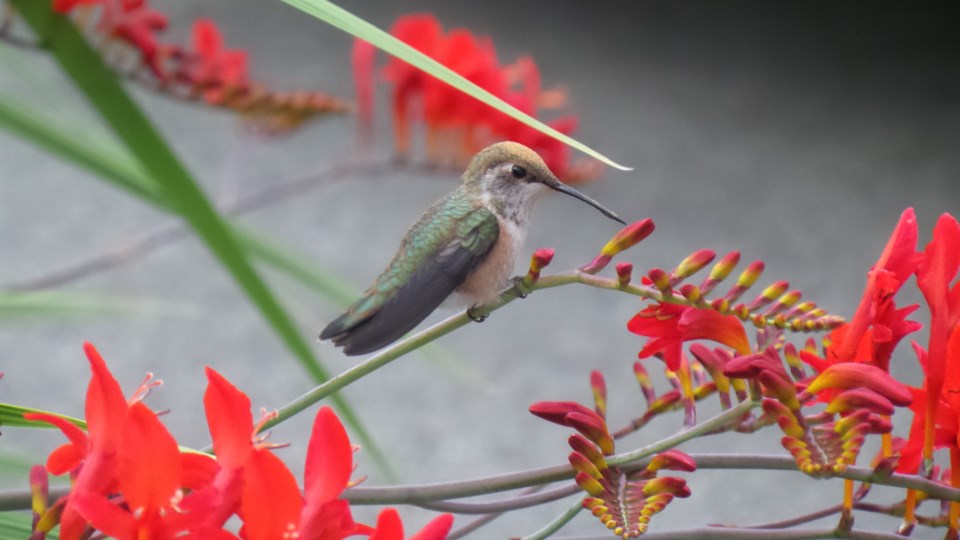Sitting on a little branch huddled close to our kitchen window, a tiny hummingbird guards its sugar water fiercely.
It looks no bigger than a ping pong ball and probably doesn’t weigh more than a nickel. With all of its feathers fluffed up to seemingly deal with the wet windy weather, I often wonder why these little guys stick around for the winter.
The Anna’s Hummingbirds are among the most common hummingbird along the Pacific Coast. In the first half of the 20th century, Anna’s Hummingbirds were found mostly in northern Baja, California and Southern California.
With the planting of exotic trees providing an ample supply of nectar and nesting sites, the Anna’s Hummingbird greatly expanded its breeding range.
Hummingbirds are strictly a New World animal. Christopher Columbus wrote about them on some of his journeys describing them as a cross between a bird and insect. At one point they were called “flybirds.”
The feathers of the hummingbirds were once favoured by fashionable Europeans as ornaments. Thankfully, that’s gone out of style.
Instead of calling them a flock of hummingbirds, you can choose between a glittering, a shimmer, a bouquet or a tune of hummingbirds. How delightful!
For the past several years Anna’s stay in the Pacific Northwest for the winter and, as we found out recently, they actually breed in January and February. They will become even more territorial as we move into the cold winter months.
It is such a surprise to know that these little creatures can actually survive our winters. Anna’s Hummingbirds normally have a body temperature of around 42 degrees Celsius — that would send us running to the doctor complaining of a fever!
When our outside temperatures fall, Anna’s Hummingbirds enter into a state of relative lethargy. Their breathing and heart rate slow, and their body temperature can fall as low as 9 degrees Celsius. When the temperature warms, the hummingbirds can become active again in a few minutes.
Anna’s Hummingbirds diets consists of nectar from many flowering plants (Witch Hazel, some Hellebores, Mahonia are blooming in Richmond right now). They also eat insects from leaves, crevices, spiderwebs, including those insects plucked right from the air.
You can add to your joy of watching these feisty little birds during these dark, dreary days by purchasing a hummingbird feeder.
Do not use food colouring or honey in your feeder. The feeder will take 1/4 cup of white sugar to four cups of water.
So, even though the Anna’s Hummingbird has the physiology to deal with all of our seasonal weather, we still find ourselves arising early in the morning during frost times to rescue the frozen feeder by warming it up under the hot water tap.
We also increase the sugar content to half a cup to one cup of water, which does help in keeping the mixture from freezing completely.
We like to believe it also helps our little friends keep their energy levels up during the cold weather.
Lynda Pasacreta is the current president of the Richmond Garden Club. For more information visit online at RichmondGardenClub.ca.



